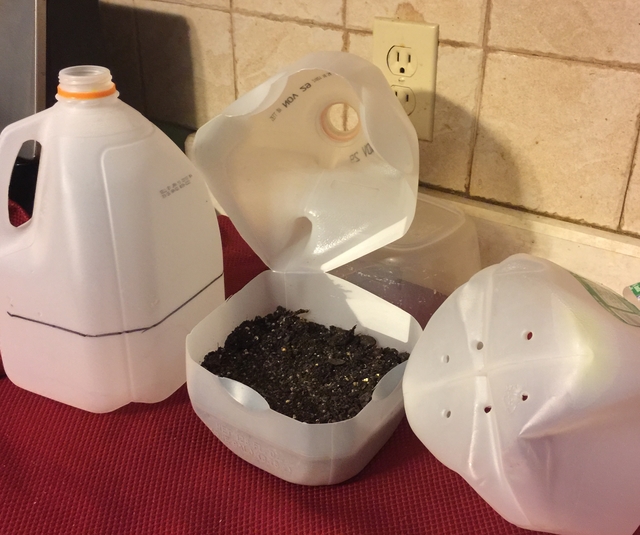The perennial shrub, Thyme, certainly deserves a place in every herb garden. Not only is it one of the most useful plants in the kitchen, but it also has attractive foliage, long-lasting flowers and it's an easy-to-care-for compact plant. English Thyme is used most often in cooking.
Types of culinary Thyme include Thymus Vulgaris, also referred to as Common Thyme, and include summer, winter, and French Thyme.
Why Feed Thyme to your Chickens
Thyme is one of the best herbs to add to your chicken feed for aiding in the respiratory health of your chickens. Thyme also has antibiotic and antibacterial properties, along with being a natural system to boost their immune system.
You can provide it to your flock with Thyme by giving it to them fresh so they can eat it when they choose, or you can add the dried herb to their feed.
Another great way to use Thyme is in their dust baths where they can benefit from the essential oils in the plants.Starting Thyme From Seed
Thyme seeds are difficult and slow to germinate, but it can be done. It will take a year to get a good-sized plant.
Seed Longevity: 2 years.
Seed Sowing Depth: Cover thinly.
Best Soil Temp for Germination: 70 degrees.
Spring Sowing
Sow indoors 6-10 weeks before the last spring frost. Plant outside 2-3 weeks before the first last spring frost.

Winter Sowing
If you haven't tried winter sowing, you're in for a treat. This method is especially good for sowing herbs. Winter sowing is basically sowing seeds in the bottom of milk jugs in the winter, setting the milk jugs outside for the winter and leaving them there until the seeds germinate in the Spring.
For our article containing detailed information about Winter Sowing, click here
Growing Thyme
Plant Size: Height 6-12” Width 12”.
Growing Soil Temperature: 70 degrees.
Spacing: 12”.
Container Size: Height: 6-8” Width: 4 – 12”.
Soil: Well-drained. Rich soil produces large plants that are less fragrant.
Watering: Light.
Light/Sun: Full Sun.
Fertilizer: Very little, not necessary.
Good Companions: Cabbage, Tomato, Eggplant.
Bad Companions: Onion family.
Other Care Tips
- Trim leggy plants.
- Lightly mulch after ground freezes.
Dividing Thyme
Softwood Cuttings of Thyme
Take cuttings in spring when new growth is several inches in length. Side shoots of 4" in length are perfect. Cut the stem at an angle and remove lower leaves leaving an inch or two of the stem bare. Plant cutting bare side down into a well-drained soil mix. No fertilizer is needed at this stage.
Wrap the container in plastic to keep in humidity. Avoid having the leaves touch the plastic. Place the pot in light but out of direct light. Keep soil moist but never soggy. Remove the plastic when cutting grows roots. A light tug that gives you some resistance means it has rooted.
Harvesting Thyme
Harvest only lightly the first year. The best flavor is mid-June and July or when the flowers are barely open.
Peel off leaves from the woody stem. The stems from younger Thyme can be used as well as the leaves. An established plant will keep coming back.
Harvesting Thyme Seeds
Shake the dry seed head to shake the seed free. If they are ripe they will fall out. If you break up the dried seed head, separating the seeds from the chaff will be time-consuming.
Storing Thyme
Fresh
Damp Paper Towel
This method works well for hardy herbs that have woody stems as well as a few soft-stemmed herbs.
- Clean and thoroughly dry the Thyme.
- Arrange lengthwise in a single layer on a slightly damp paper towel.
- Loosely roll up the herb and transfer to a plastic bag or plastic wrap.
- Label and store in the fridge.
Freezing Thyme
For best results, use frozen Thyme within 1-2 years.
By freezing herbs, you will lose some of the herb's texture but preserve the flavor.
Here are a few freezing options to consider:
Here are a few freezing options to consider:
Tray Freeze
Strip leaves off the stems and spread onto a cookie sheet on a single layer. Freeze in the freezer, then place in a labeled freezer bag to store. Since the leaves are frozen separately, you can easily remove the amount you need.
Ice Cube Trays with Oil
This method works well for hard stemmed herbs that would probably be cooked when adding to a dish. The oil reduces some of the browning and freezer burn.
Clean and thoroughly dry herbs. Mince and pack herbs into an ice cube tray 3/4 full. Add Olive Oil to fill and freeze. Transfer frozen cubes into labeled freezer bags to store.
Flat Freezer Bag
Trim off the stems and place them in a labeled freezer bag. Squeeze out the air, flatten the freezer bag, label and store.
Drying Thyme
For best results, use dried Thyme within 1-2 years.
Thyme is one of the best herbs to dry. For drying, harvest Thyme when plants begin to flower.

Hang to Dry
Pick the Thyme in bunches right before you intend to store them. Tie the bottom of the bunch together with twine and hang upside down to dry in a dry, low humidity area. For added protection against dust, you can put the bundles inside paper bags with plenty of holes for ventilation. When the herbs are dry, the leaves will crumble easily between your fingers. Store in an airtight container.
Using Thyme
- Thyme is an essential element in Creole, Cajun, Greek, and French Cuisine.
- Thyme can be paired with just about any kind of meat, poultry, fish or vegetable.
- Thyme is usually incorporated during the cooking process as opposed to the last minute.
~~~~~~~~~~~~~~~~~~~~~~~~~~~~~~~~~~~~~~~~~~~~~~~~~~~~~~~~~~~~~~~~~~~~~
There's nothing like the aroma of fresh-picked herbs! Try growing some today and save money! Your chickens will love you for it!
~~~~~~~~~~~~~~~~~~~~~~~~~~~~~~~~~~~~~~~~~~~~~~~~




































